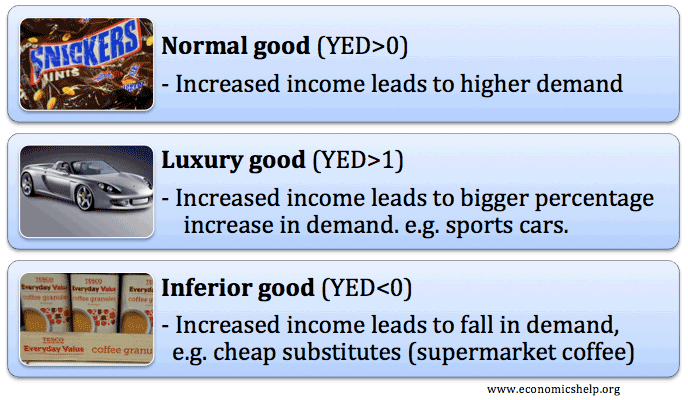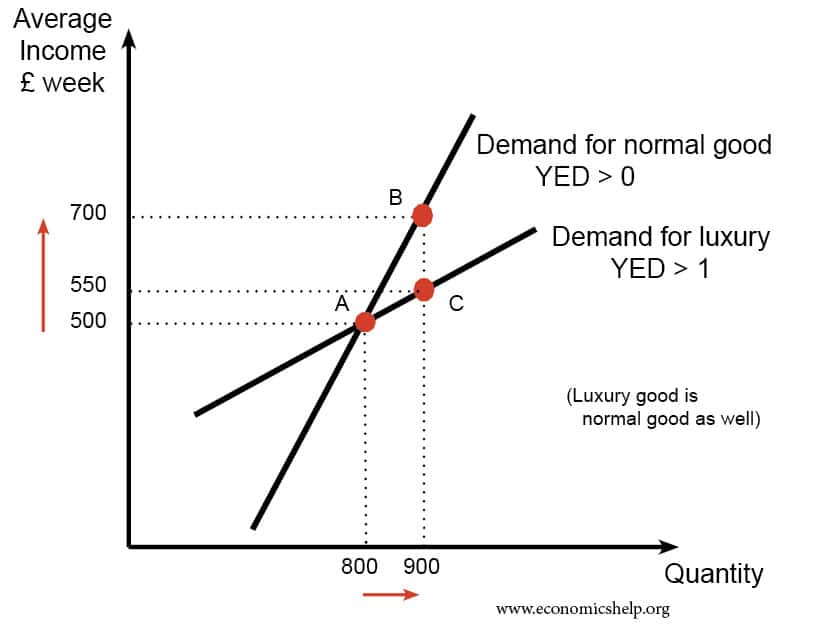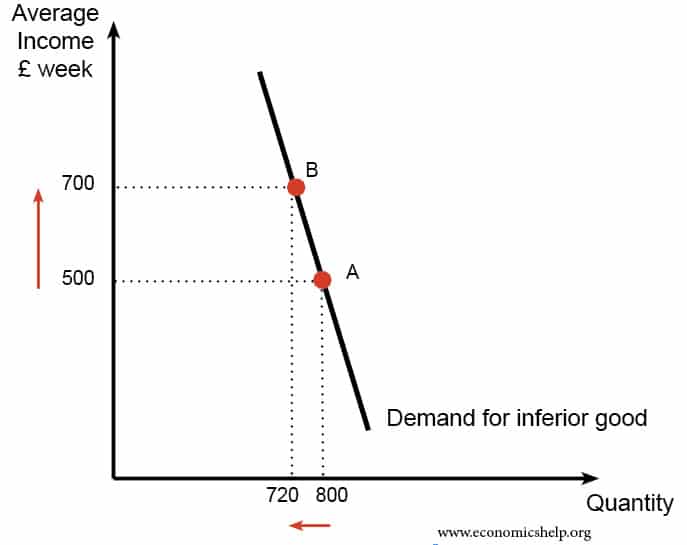– Inferior, Normal, Luxury
Tejvan Pettinge
A list of different types of economic goods.
Income elasticity of demand and types of goods
Income elasticity of demand (YED) measures the responsiveness of demand to a change in income.
Normal good
- A normal good means an increase in income causes an increase in demand. It has a positive income elasticity of demand YED. Note a normal good can be income elastic or income inelastic.
- Luxury good. A luxury good means an increase in income causes a bigger percentage increase in demand. It means that the income elasticity of demand is greater than one. For example, HD TV’s would be a luxury good. When income rises, people spend a higher percentage of their income on the luxury good.
YED calculations
- In the above example of a luxury good, income rises (500-550) 10%, demand rises 100/800 – 12.5% YED = 12.5/10 = 1.125
- In the above example of a normal good, income rises (500-700) 40%, demand rises 100/800 – 12.5% YED – 12.5/40 = 0.3125
Note: a luxury good is also a normal good, but a normal good isn’t necessarily a luxury good.
Inferior good
An inferior good means an increase in income causes a fall in demand. It is a good with a negative income elasticity of demand (YED). An example of an inferior good is Tesco value bread. When your income rises you buy less Tesco value bread and more high quality, organic bread.
Other types of goods
- Complementary Goods. Goods which are used together, e.g. TV and DVD player. see: Complementary goods
- Substitute goods. Goods which are alternatives, e.g. Pepsi and Coca-cola. See Substitute goods.
- Giffen good. A rare type of good, where an increase in price causes an increase in demand. The reason is that the income effect of a rise in the price causes you to buy more of this cheap good because you can’t afford more expensive goods. For example, if the price of wheat rises, a poor peasant may not be able to afford meat anymore, so has to buy more wheat. See: Giffen goods
- Veblen / Snob good. A good where an increase in price encourages people to buy more of it. This is because they think more expensive goods are better. See: Veblen good
Market Failure
- Public goods – goods with characteristics of non-rivalry and non-excludability, e.g. national defence. See: Public Goods
- Merit goods. Goods which people may underestimate benefits of. Also often has positive externalities, e.g. education. See: Merit goods
- Demerit goods. Goods where people may underestimate costs of consuming it. Often has negative externalities, e.g. smoking, drugs. See: Demerit goods
- Private goods – goods which do have rivalry and excludability. The opposite of a public good See: private goods
- Free goods – A good with no opportunity cost, e.g. breathing air. See: Free good



